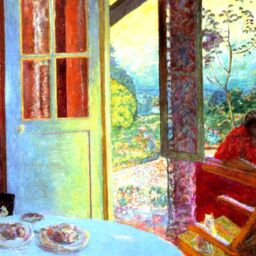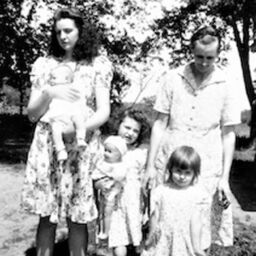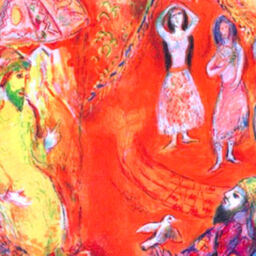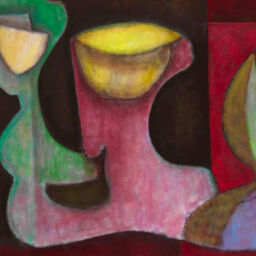
Marriage as a “Hotbed of Individuation”
Download or listen to this article
Jonathan Elias, April 25, 2021

According to psychotherapist Angelo Spoto (1995) though, contemporary romantic relationships rarely feature this passionate and fruitful pairing of types, and thus “marriage is not the hotbed of individuation it may once have been” (p. 107). He argued in “The Inferior Function as a Moral Issue” that, unlike in earlier eras, we now look for “something psychologically safe in a marriage partner” and act out our psychic urge for our animating opposite through “exciting, romantic” extra-marital affairs (p. 107). This somewhat depressing hypothesis about the loss of passion and psychological potency in contemporary marriage does not comport with my personal experience in marriage or my professional experience as a counselor of young couples. Rather than seeking “psychological safety” out of fear of the intensity of true intimacy, my young clients seem to be admirably concerned with the profound responsibilities of a committed relationship. They do not see the safety of a stable, trusting relationship as being at odds with the excitement and romance of erotic love, but rather understand each of these elements to be necessary to a fulfilling romantic relationship.
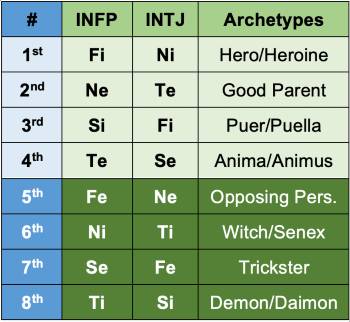
Superior Functions and Falling in Love
James Hillman’s (1985/1998) writings on the anima provide a theoretical foundation for an alternative conception of typology and romance, one which distinguishes the erotic from the soulful. By demonstrating how Jung’s writings on the anima at times conflate the archetypal soul-image with the psychic energy which activates it, Hillman disentangled the energy of romantic attraction from the correspondences of personality types. He offered the myth of Eros and Psyche (an anima figure) as a more differentiated way of understanding the relationship between erotic longing and the connection to depth which anima/the inferior function affords. Like Cupid with his arrow, Eros unexpectedly “visits itself upon life and fate” from without, stirring Psyche with intense emotion (p. 21). From this perspective, what makes us fall in love is distinct from the soul that love penetrates. “Though love be essential to soul,” he wrote, “and though soul be that by which we receive love, soul is not love” (p. 33).
When we distinguish between soul and love, or Psyche and Eros, in this way, then we gain a more nuanced picture of the relationship between romance and the inferior function. In the psychological reading of the myth, the mortal Psyche develops into a goddess through completing the painful tasks required of her to reunite with her lover, Eros. Psyche, our inferior or anima function, is inspired to embark on her individuating path out of the passionate longing that Eros has awakened in her—in the myth, through one of his magical arrows. So erotic love is not the energy created by the attraction of opposites, but rather a divine spirit that touches and awakens our inferior function. Thus, we do not need to be married to our typological “opposite” or “other half” to be driven towards individuation by erotic love; however, the anima function of each partner must have been pierced by Eros for a soulful marriage to be possible.
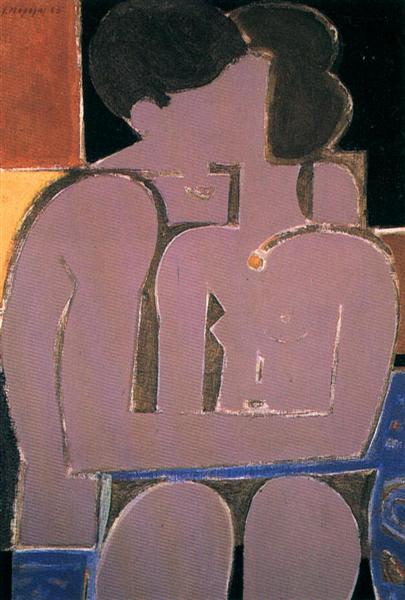
Alex’s dominant function of introverted intuition is her perceptual, information-gathering process. Unlike its complement sensation, her intuition gathers information not of the empirical data of the outside world, but rather of the images manifest in the psyche. The “reality” of intuition, in other words, is of a psychic, instead of physical, nature. Because her intuition has an introverted attitude, her consciousness is directed to these psychic images as they appear to her internal world, to the unconscious contents which are made manifest to her conscious perception. As Jung (1921/1976) wrote, introverted intuitives are not concerned with the external object itself but “with what the external object has released within” them (¶ 656). As its perception is independent of the conscious mind, and sometimes even proceeds without an extra-psychic stimulus, introverted intuition has a mysterious and visionary quality that allows it to grasp underlying patterns and achieve startling insights. The imagistic and abstract perceptual style of the Ni types can make verbal communication particularly difficult for them because the intensity of their interior experience is often belied by a composed exterior presentation. As a result, Jung (1921/1976) observed the Ni in her extreme manifestation is “almost inaccessible to judgment from outside” and can be easily “underestimated, or at least misunderstood” (¶ 664).
My dominant function of introverted feeling is my decision-making process. Unlike its complement thinking, my feeling style of decision-making makes judgments not based on facts and logic, but rather on a system of values which seeks a sense of harmony. Because my feeling has an introverted attitude, this harmony is a subjective and internal one, based on personal rather than collective values. Jung (1921/1976) wrote that introverted feeling “strives after inner intensity,” a connection through feeling (rather than thought) with the deeper layers of the psyche (¶ 638). The “gut feeling” which guides the Fi’s decision-making process reacts to the effects of an object or situation on the type’s personal values. Acting in accord with these values creates a sense of “authenticity.” It is this need for inner harmony and authenticity that makes verbal communication difficult for the Fi, as the form in which one communicates is just as (if not more) important as the content one seeks to express. Jung (1921/1976) wrote that the challenge in communication for the Fi type is to “find an external form not only acceptable to itself,” to its own standards of authenticity, “but capable also of arousing a parallel feeling” in the listener (¶ 639).
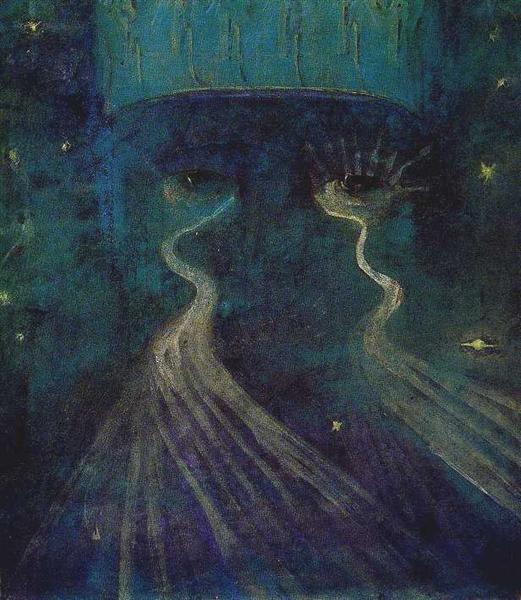
For my part, I had no intention of being “challenging and provocative” when I approached her. We had a relatively brief interaction on that day and made no plans of seeing each other again. I first fell in love with her the second time we met, when I bumped into her and her girlfriends at a restaurant one night. Knowing that I loved writing and literature, Alex’s sister showed me a poem Alex had written for her birthday. The symbolist, expressionistic style of her poem communicated Alex’s love for her sister in a manner very close to the way she experiences it: on a deep, unconscious level, which speaks in the language of image and metaphor. An INTJ’s auxiliary outward-directed function, extraverted thinking (Te), typifies the style of Alex’s engagement with others. People generally appreciate Alex chiefly for her Te processes, seeing her as someone who is hyper-competent, organized, logical, and decisive. Little do they know that this outward appearance belies an internal nature which thrives on inspiration and an inner sense of possibility and symbolic understanding. When I read Alex’s poem, I could feel the nuance and beauty of her way of seeing—her mostly invisible dominant function, introverted intuition—and I experienced a sense of deep connection and admiration: “This is a kindred spirit, this is someone who gets it,” I thought. In the language of my introverted feeling, Alex’s poem activated my “inner sense of knowing about [her] authenticity” (Haas & Hunziker, 2006, p. 108). Crucially, her authenticity and brilliance also felt in harmony with my deeper personal values. She was humble about her many accomplishments (all of which I learned about from her sister) and genuinely curious about and caring towards others.
A few months into our relationship, Alex and I were finally able to say “I love you”—a clear, declarative statement which we both knew to be true well before it was spoken. Before we could express ourselves directly, the message went through a series of intermediaries: what Alex intuitively knew was conveyed to me through a poem of hers via her matchmaking sister. The difficulties along the path from the heart to the mouth, typical for the introverted feeling and introverted intuitive types, might have delayed this confession unnecessarily, but they also endowed it with the weight of deep feeling and sincerity.
Two Kinds of Conflict
In the intervening years between those first encounters and now, Alex’s and my lives have changed dramatically: we have gotten married, bought a house, become trained as psychotherapists, and are raising an 18-month-old boy. Every new challenge we have faced together has offered an opportunity to make our marriage more conscious and distinct. Through navigating each of these new experiences, we have become more aware of the disparities and interrelationship of our types. They have helped us understand the wisdom of MBTI® co-creator Isabel B. Myers’ (1980/2018) suggestion that through mutual understanding and respect, a couple can see their typological differences not as “signs of inferiority, but as interesting variations in human nature, which enrich their lives” (p. 134).
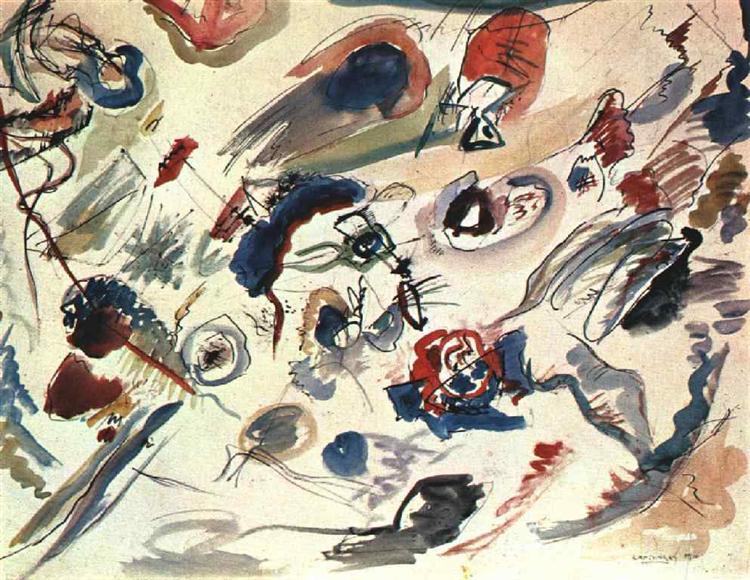
The Opposing Personality
Although Jung’s writings on romantic relationships offer a way of understanding marital conflict as valuable and even necessary to deeper intimacy, I believe it is crucial to distinguish those creative conflicts from ones that instead demand an awareness of their potential to cause harm. Beebe’s addition of the unconscious functions creates a model for making these distinctions through typology, and he highlights one’s fifth function as being particularly antagonistic and subject to projection. Carol Shumate (2008) identified the archetype corresponding to this unconscious function as one which, when triggered, evokes a “visceral revulsion” in us (p. 4). In an interview with coworkers with the opposite superior (or “hero”) functions of introverted and extraverted intuition (Ne), Shumate noted that the antagonistic energy of the fifth function was triggered by their different communication styles. Whereas Ni types “want to dwell on one topic,” the Ne types, out of a desire to find a variety of solutions to a particular issue, quickly flit from one idea to the next (p. 6).
Alex’s “hero” introverted intuition finds its opposite in my auxiliary ”parent” extraverted intuition. In a recorded conversation about a recent flare-up of the opposing personality, Alex and I identified the unconscious energy as being similarly related to communication. She was discussing a difficulty she was working through with one of her counseling clients. My Ne, in an effort to be helpful, offered various suggestions of what she might do to overcome this difficulty. In retrospect, this seemingly benign effort might have suffered from what Jung (1921/1976) described as the “characteristic morality” of one-sided Ne, which values, rather than service to others, “loyalty to his vision and…voluntary submission to its authority” (¶ 613). My Ne did want to help Alex, in other words, but it also wanted Alex to see that I knew just how to help her. Whether from the opposing communication styles of Ni and Ne or this self-interested “morality” of the extreme Ne, Alex received my efforts as a discounting of her approach to the problem which involves processing the nature of the difficulty until an insight gradually emerges. I could feel in the moment that she had become detached from me, and the conversation became a heated one in which she accused me of not understanding her on a deep level and not taking her seriously as a therapist. Alex said, “I was thinking, ‘Asshole, do you think I’m an idiot?’” in an uncharacteristic tone that had the opposing personality’s hostile energy.
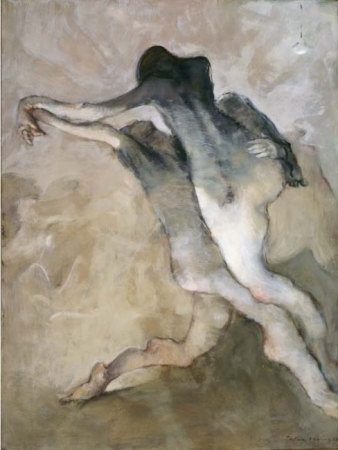
Extraverted Thinking in Our Marriage
My inferior extraverted thinking is Alex’s secondary function, which Beebe’s model associates with her parent archetype. Extraverted thinking is a decision-making function which “elevates objective reality, or an objectively oriented intellectual formula, into the ruling principle” of one’s judgment, as Jung (1921/1976) explained (¶ 585). It is a systematizing style which prefers structure and seeks to achieve quantifiable, productive goals; as such, it is action-oriented. Because Te is INFP’s inferior function, situations which seem to require concrete, directed action demand a great expenditure of energy for me.
This discrepancy between the way our personalities experience and express extraverted thinking has manifested throughout our relationship, particularly as we have been developing our new roles as parents. Alex’s “parent” function is evident as an actual parent: she has made sure that our son Oliver’s life has the security and grounding offered by Te structure and routine, and she can definitely “be relied upon to have a contingency plan” for every unexpected need that might emerge in Oliver’s day (Haas & Hunziker, 2006, p. 76).
Her extraverted thinker gifts, however, though they usually are of immense benefit to our marriage and family, can sometimes lead my type to react negatively and unproductively. My superior introverted feeling sometimes worries that Alex’s outward, goal-directed focus prevents her from using her superior introverted intuition and thus being true to her deepest nature, my ultimate Fi wish for her. Jung (1921/1976) similarly stressed that the auxiliary function is “useful only in so far as it serves the dominant function, without making any claim to the autonomy of its own principle” (¶ 668). I want to give her the freedom and time to nurture her inner urge for meaning and inspiration, and the ideal solution would seem to be for me to contribute more to all the Te tasks that being a parent requires. I do my best in this capacity, but not only is it naturally difficult for my type to use this function, but also—and more importantly for our relationship—its typological inferiority is mirrored in an “inferiority complex” of mine, one which can be manifest in defensiveness and projection. “You say cruel things in a passive way,” is how Alex describes my habitual defensive reaction. When I act out the complex reflexively, I can misuse the feeling type’s “eye for the soft spot in the other,” its surgical precision in “putting the needle in,” as James Hillman (1971/1975) wrote in an essay on the feeling function (p. 99). The inferiority complex projects a caricature onto Alex as the ruthless Te efficiency expert, demanding that I betray my “authentic” self and start taking care of business.
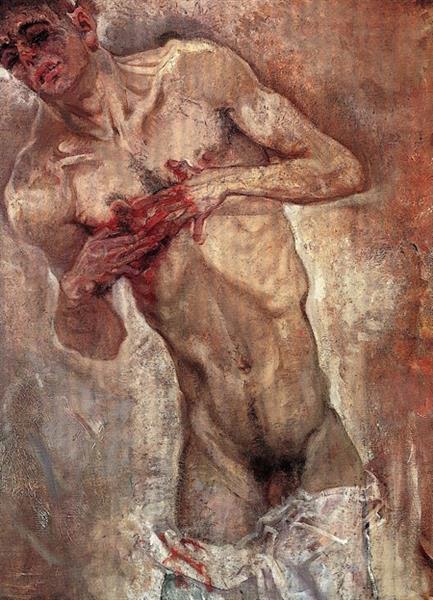
Although the repetitive symptoms of my inferior extraverted thinking complex do sometimes still emerge in moments of stress, our marriage of types has helped me grow this integrity of personality. When I manage to withdraw my projections and hold the tension of the complex, I can speak from the vulnerable, embarrassed place of this anima function. During one such instance that has stuck in my memory, I confessed to Alex: “I just feel like I don’t bring anything to this family, that there’s nothing I can contribute that you can’t do better.” “What are you talking about?” she said. “You give us music. Without you we wouldn’t have that.” When Alex spoke of “music”—which she meant metaphorically, using her imagistic introverted intuitive language—as something that is a real contribution, it brought the “tremendous charge of emotion” to me that von Franz (1971/1975) associated with the inferior function (p. 11). Her Te parent did not demean and attack me, but rather offered a sort of maternal encouragement and attention.
The dynamic that had often been a source of inner and marital conflict had revealed its ability to add intimacy and individuality to our partnership and uprightness to my sense of self, showed me how my introverted feeling values could produce extraverted thinking results, and helped me differentiate my feeling function from the inferior emotionality with which it can be easily confused. Such discernment of feeling from emotion is crucial for the development of a feeling type, as James Hillman (1971/1975) explained in his essay on the feeling function. Though the Fi prizes a sense of authenticity, to react with defensive, primitive emotionality to a perceived challenge to it is also a betrayal of the Fi system of values, as this reaction is not in harmony with the true inner feeling of vulnerability and weakness.
Romance and the Gods
As joyful as our first weeks of falling in love were, I find an even deeper delight in moments like the one above, when Alex helped me claim my personality’s “spine.” When counseling couples who are considering marriage, who so often wonder whether they are “ready” for such a commitment, I always look for similar situations in their lives, moments when each person’s “sore spot” is activated in their relationship—ideally in relatively minor ways, so that the inferior function does not act out and cause the couple unnecessary harm. When a couple is able to hold the tension of the activated inferior function and find a way to make their relationship a vehicle for the development of personality, then I think that they are “ready” for marriage in one of the most crucial ways.
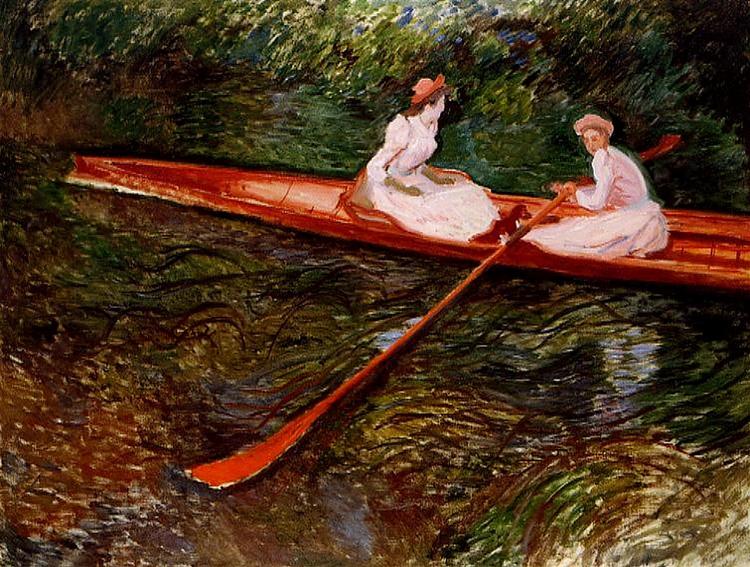
Although I disagree with Spoto’s diagnosis of contemporary marriage, his critique does highlight a fundamental element of a lasting, fulfilling relationship: a shared understanding of the relationship’s purpose. If one person believes that marriage should be a haven of psychological safety, free from the pain inherent to the birth of consciousness, and the other believes that it should be an exciting hotbed of individuation, full of ecstasy and torment, then it might prove impossible to be a mutually satisfied couple. Both partners must be willing to embrace the other’s fundamental beliefs about relationships—which, to extend Johnson’s metaphor, can be seen as their particular religious orientation to the gods of romance. For marriage to be an opportunity for psychological growth, Eros must have pierced the psyche of each partner. As it did with me and Alex, this initial phase of erotic love and its requital is one which might not be simultaneous for both partners and will differ depending on psychological type. This enchantment is not the aim of love, but it signals the potential for the development of a lasting intimate relationship.
Being “touched by the gods” is not always a joyful experience. Understanding our fourth function as corresponding with the anima archetype reveals the idea of a “soulmate” in a different light. Eros, who awakens the longing of Psyche (or soul, anima, the inferior function), stirs not only desire and transcendence but also “hatred, spite, suspicion, jealousy, rejection, enmity, deception, betrayal, cruelty, misanthropy, and ridicule,” to quote James Hillman’s (1985) list of “anima experiences” (p. 35). If the soul includes this whole spectrum of emotion, then a marriage between “soulmates” not only requires but also challenges our devotion and openness. As Beebe’s model also shows, however, not all emotion can be attributed to anima experience, that experience which brings a sense of renewal, a connection to the mythic and the depths, and an opportunity to develop psychological integrity. An awareness of typologies in marriage can help distinguish between the intensity characteristic of development and the pain that can damage this union of souls.
References
Beebe, J. (1992). Integrity in depth. Texas A & M University Press.
Haas, L. & Hunziker, M. (2006). Building blocks of personality type: A guide to discovering the hidden secrets of the personality type code. TypeLabs.
Hillman, J. (1975). The feeling function. In M.-L. von Franz & J. Hillman, Lectures on Jung’s typology. Spring Publications. (Original work published 1971)
Hillman, J. (1998). Anima: Anatomy of a personified notion. Spring Publications. (Original work published 1985)
Johnson, R. A. (1989). She: Understanding the psychology of romantic love. Harper Collins.
Jung, C.G. (1954). Development of personality (R. F. C. Hull, Trans.). In H. Read et al. (Eds.), The collected works of C. G. Jung (Vol. 17). Princeton University Press. (Original work published 1925)
Jung, C.G. (1976). Psychological types (R.F.C. Hull, Trans.). In H. Read et al. (Eds.), The collected works of C.G. Jung (Vol. 6). Princeton University Press. (Original work published 1921)
Myers, I.B. with Myers, P.B. (2018). Gifts differing: Understanding personality type. CPP. (Original work published 1980)
Shumate, C. (2009). The opposing personality: Recognizing the archetypal energy. Bulletin of Psychological Type, 31(4) & 32(1).
Spoto, A. (1995). The inferior function as a moral issue. In Jung’s typology in perspective. Chiron Publications.
von Franz, M.-L. (1975). The inferior function. In M.-L. von Franz & J. Hillman, Lectures on Jung’s typology. Spring Publications. (Original work published 1971)
Images
Ciurlionis, M. (1906). Eternity. Retrieved from wikiart.org
Colville, A. (1952). Woman, man, and boat. Retrieved from wikiart.org
Kandinsky, W. (1910). First abstract watercolor. Retrieved from wikiart.org
Monet, C. (1890). The pink skiff. Retrieved from wikiart.org
Morales, Y. (n.d.) Erotic. Retrieved from wikiart.org
Oppenheimer, M. (1911). Bleeding. Retrieved from wikiart.org
Tanning, D. (1977). Tango lives. Retrieved from wikiart.org






